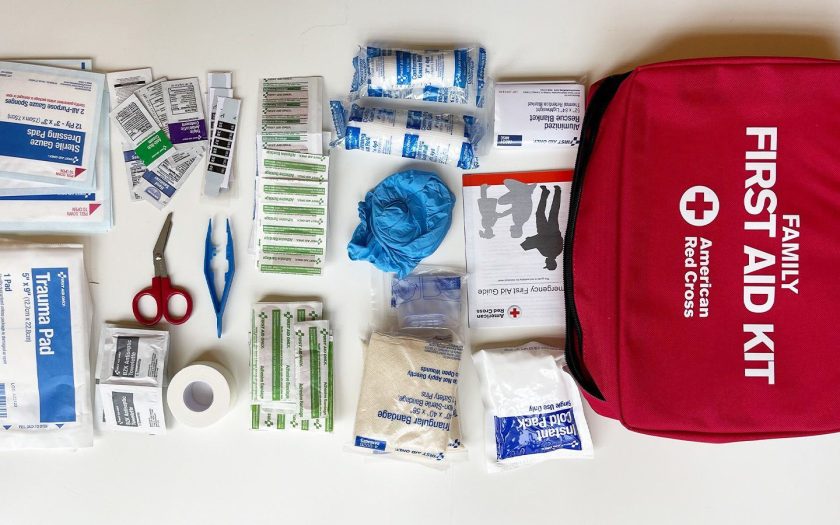Each person should have a minimum set of drugs for any occasion, especially if there are elderly people and children in the family. There is no need to buy many medicines, some do not have such a long shelf life, and they have special storage conditions. But the first-aid kit should have something that will help in an ordinary case and something that can be used until the ambulance arrives.
The contents of the first aid kit can be divided into categories:
Material for bandages and antiseptics – cotton wool, bandage, antibacterial plasters, chlorhexidine, hydrogen peroxide, iodine. All this can be used to treat the hurt, stop the bleeding and bandage the wound.
Medical equipment and various devices. This category include a tonometer, thermometer, pipette, enema, nasal aspirator, latex sterile gloves, disposable masks, warmer, measuring spoon for medicines, syringes.
Medicines can also be divided according to the range of influence:
Painkillers. Pain can have different nature: headache, toothache, period pain, pain in any part of the body. If the pain is acute (especially in the abdomen), you cannot self-medicate, you need to call an ambulance as soon as possible. The most famous painkillers: paracetamol, ibuprofen, citramon, ketanov, baralgin.
Spasmolytics. Spasms mainly occur in the abdominal area and cause pain. Drotaverine, for example, relieves spasms.
Wound healing medicine. They will help with burns, cuts – Panthenol, Solcoseryl.
Anti-cold drugs. Drops for the nose, remedies for sore throat, antipyretics. You can also put cough lozenges in the first-aid kit, which help relieve a sore throat.
Antihistamines. They help shot allergies and their manifestations. For example, Suprastin, Tavegil.
Sorbents. They can help with various poisonings – white coal, enterosgel, polysorb, smecta.
Laxatives and enzymes. They help to solve the problem of constipation and difficulties with digestion. Glycerin suppositories, herbal teas, lactulose. Festal, mezim forte.
Ointments for sprains and injuries. They have an analgesic, calming effect. Viprosal, Fastum-gel, Nurofen-gel.
Sedatives. Valeriana, novo-pasit.
Drugs for hypertension and heartache – bisoprolol, nitroglycerin.
How to keep medicines
You can’t store medicine carelessly – it’s dangerous, especially if there are animals or small children in the house. In addition, it will be difficult to find the necessary drug fast. It is best to select a special shelf, locker, box for the first-aid kit, where the medicines will be sorted as much as possible. It is also important do not forget about regularly checking the expiration date of tablets, drops, syrups. Some medicines are only good for a month or two after opening. It is not possible to keep medicines, the packaging of which doesn’t have the making date.
You can buy a small portable pill boxes with convenient sections in shop or drugstore. But you can also use an ordinary small box. Then, regularly taking pills outside will not cause you trouble and there will be no need to carry large packages of medicine with you.

